Living Liturgically - Celebrating Lent with Young Children
Mar 01, 2023 by Cheryl Hadley
Most of us probably think of Lent as a somber time of repentance, sacrifice, fasting, and intense preparation that is not necessarily joyful. In fact, we feel it is more fruitful when we "do the hard work." We are more likely to "observe" Lent than to "celebrate" it. Why is that? Especially when we have young children, for whom everything is an adventure, and joy is innate? Here are some inspirations and helpful tips for living Lent with young children:
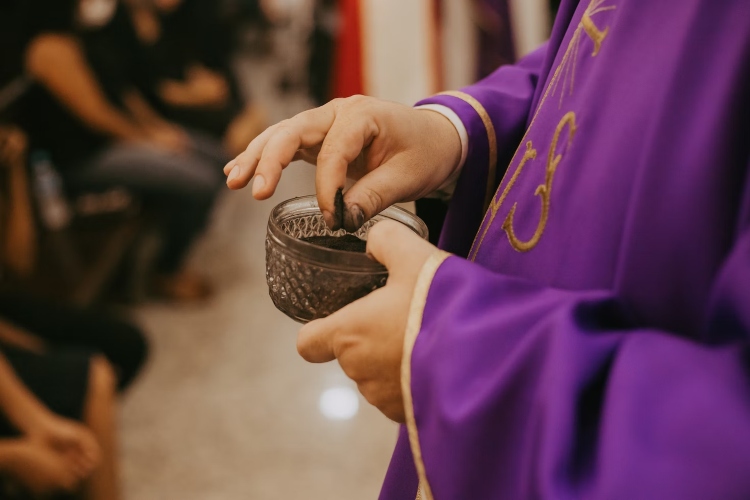
Setting the Context
When I came to a full embrace of our Faith, I was a new mom with my first two children. My husband was not practicing his faith back then, but he was docile and generous enough to allow me to do what I believed was best for our family.
I felt a pressure to "get it right." To impart my faith to the kids, so they would love it as much as I did. Yes, it was joyful, but it was sometimes stressful. I wish I had understood way back then that I did not have to be the perfect Catholic mom. I only had to be the Catholic mom God was calling me to be.
As you live liturgically at home this Lent, try to frame the season as a celebration—an anticipation—of the hope that is to come. Let Lent be a season of repentance, recommitment, and the chance to start anew—as you all make gifts of yourselves, and your love, to our good God.
It doesn't have to be perfect. Catholic life—especially Catholic family life—is not perfect. If anything, it is perfectly imperfect! And that's OK. You are not aspiring to be the perfect parent. You are aspiring to be the parent God created you to be.
Start with Ash Wednesday
I know it's hard with little ones, and you may not think yours are ready, but it's a meaningful way to start the Lenten season. Of course, none of my kids liked the ashes when they were small, and since no one wanted to go out with ashes on their foreheads as they aged, we went to Mass in the evening.
By the time the kids grew older, I took them to school late on Ash Wednesday, after morning Mass. They didn't mind that, of course! Since they rarely missed school, it had a special appeal, and emphasized the importance of what we were doing.
Bringing your kids into Lent with a prayer service or Mass where you all receive ashes is meaningful and symbolic. It also helps you prepare your own heart to begin this sacred season.
[[1046, 50896]]
Whether or not you attend a prayer service or Mass for Ash Wednesday, when you are all together again, eat a simple, meatless meal and talk about Lent. Read a children's book that explains it, and tell the kids you will be doing some special things to honor Jesus during the next 40 days.
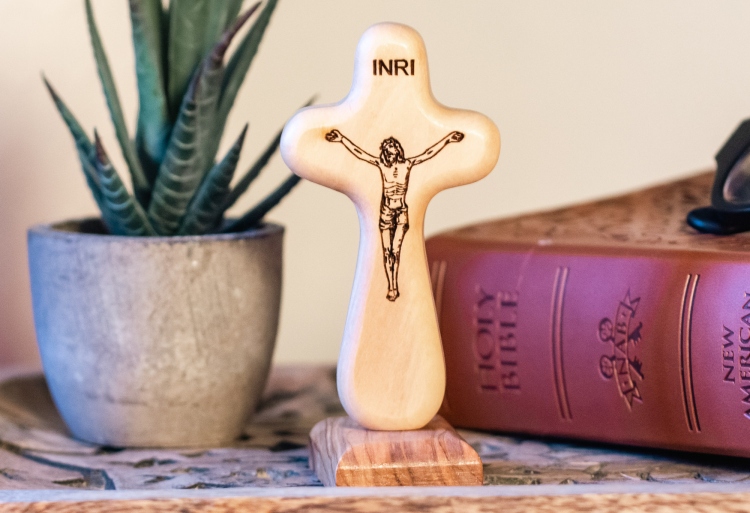
Set Up a Prayer Table
Ask children to help you set up a small prayer table. Put them in charge. It can be as simple or elaborate as you like. A folding table works great. Position it so you can all sit comfortably near it, and see it during the day. Cover it with a sheet or tablecloth, and have the children place visual reminders there.
An LED candle, crucifix, Crown of Thorns, Bible, books for children about Lent and Jesus, and pictures of Christ are all great items for the table.
[[13376, 1728]]
Consider purchasing some colored sea glass or filler stones in the floral section of a craft store. When the children make sacrifices, let them place a stone into a basket on the prayer table. Keep the bag of stones out where everyone can see them as a reminder.
As an alternative, print out a large image of a lamb for each child. Keep a bowl of cotton balls on the table. With each daily sacrifice, children can glue a cotton ball to their lamb so that the lamb's coat grows as Lent progresses.
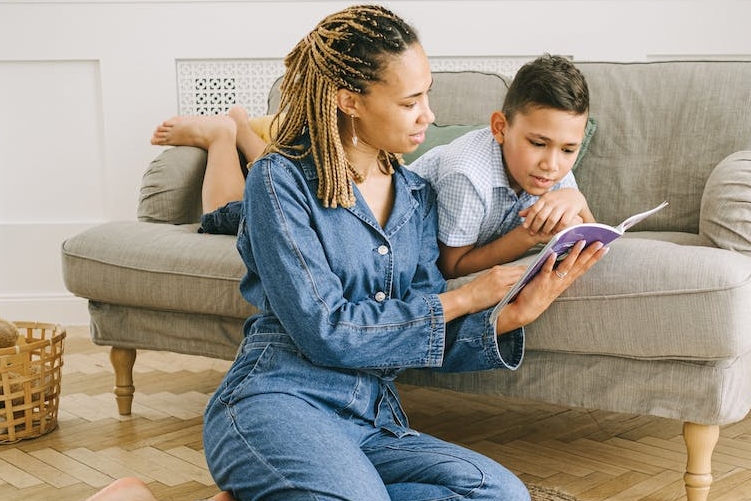
Spend Quiet Time Together
At the end of the day when things should naturally quiet down, have a child turn on the candle at the prayer table. Sit near it, comfortably together. For just 5-10 minutes, say a prayer of thanksgiving for the sacrifice of Christ.
Take turns leading the prayer. It does not have to be formal. In one of my fondest memories, my 3-year-old daughter prayed sweetly, "Thank you, Lord, for dying. Also, for dogs. And for raisins."
[[1045, 9347]]
You can read a few pages from a book about the season, say a decade of the Sorrowful Mysteries, or let younger kids draw a picture for Jesus, and older kids read aloud from a simple Stations of the Cross book.
Use a Lenten Activity Card Pack together, or just take turns thanking Him for the blessings of your days. There are so many options, and they don't have to be complex. The goal is the quiet and reflective time together, focused on Christ and His love for us.
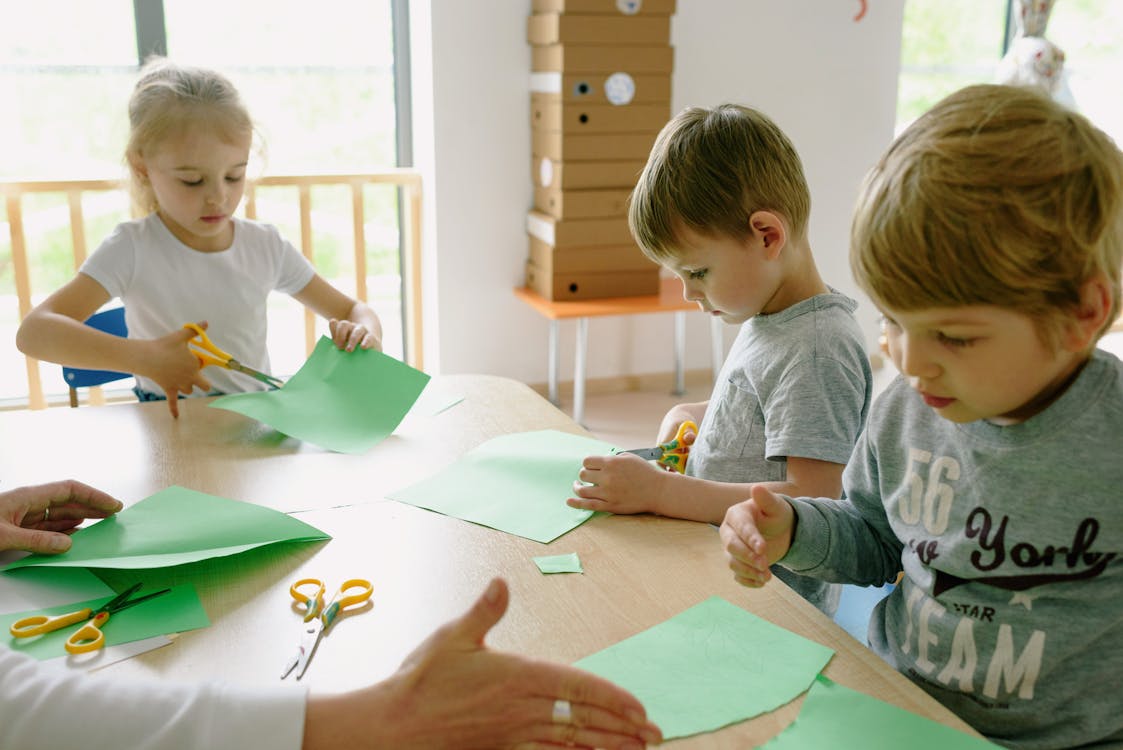
One of my favorite activities when our kids were young was to make a paper chain containing prayers, sacrifices, and other "Gifts for Jesus" appropriate to the season. You can assemble it together as a family during this evening quiet time, using strips of paper, a marker, and glue sticks.
Find suggestions for the Lenten activities written on each link by searching online, or write your own. They can be as simple as, "Tell someone you love them," or "Thank Jesus for two good things that happened today."
For older children, these can involve commitments such as, "Do a chore without being asked," or "Make a small sacrifice of your choice today." Have children tear off a link during your quiet time together so they know what they are doing for Jesus the next day.
Go Together to Confession
Repenting and starting anew are important ways to enter fully into the season of Lent. If your family does not go to Confession regularly, Lent is the perfect time to return. If it's been a while, review with young children so they are not anxious and can be prepared.
Explain the importance of repentance as a theme of Lent, and go to Confession together. If you have not received the Sacrament in a while, when you receive it joyfully, young children will take their cue from you. If you go regularly, make it a family event, and explain that it is one important aspect of Lent.
Find a small way to celebrate together afterward. This helps children understand what a special grace it is to receive God's forgiveness, and how good the gift of Reconciliation feels.
[[13184, 17691]]
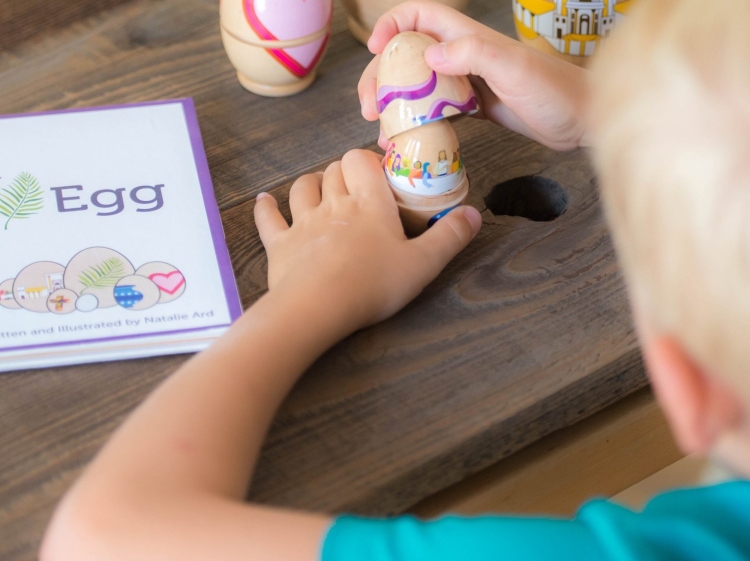
Teach in a Tactile Way
Over 20 years ago, when my kids were young, options for Easter Story Eggs or Resurrection Eggs were limited. With instructions from the kids' preschool, I made them out of plastic eggs and small, symbolic items. Now these creative teaching toys are readily available.
Children are tactile, and they will learn quickly and enjoy engaging in activities that appeal to their senses. Kids will delight in opening each egg and using the visual cues to tell the Easter story all by themselves.
In our family, the kids did this daily during Lent. They often competed over who would do it first, who told the story most completely, or whose turn came next. It was great fun for them, they learned the story quickly, and they knew it was quite an accomplishment.
[[15947, 33024]]
We kept the eggs in a basket on our kitchen table so everyone could reach and enjoy them. By the time my youngest was three years old, he could open each egg and tell the story of the Passion and Resurrection, to the amazement of our extended family members!
We still have our homemade set today, almost 25 years later, and we place them in the center of the kitchen table during Lent as a beloved family tradition.
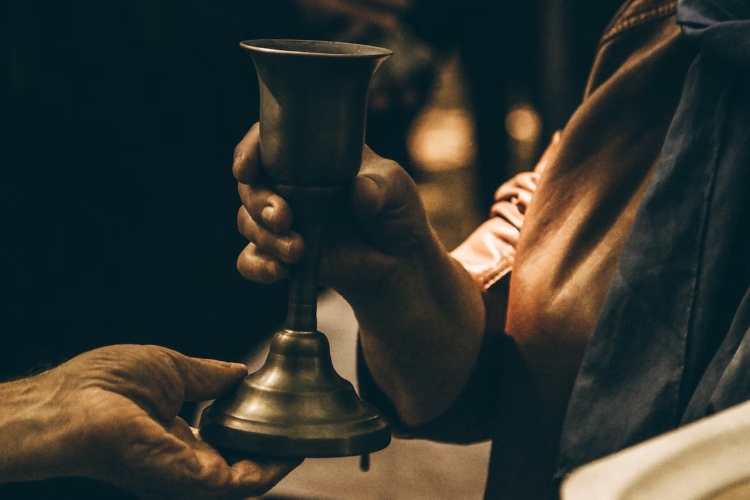
Enter into the Triduum
In our early days as a family, we belonged to a dynamic and active parish that had child-friendly missions, Lenten Soup Nights, Fish Fries, and a vibrant family ministry for those with young kids. They also recognized that not every child could sit still easily.
If your children are older, or able to attend with only the typical level of disruption, perhaps they are ready to try The Mass of the Lord's Supper, or an activity on Good Friday.
Our strategy was to start them sooner, rather than later, so they learned that "this is what we do." That said, we had our share of meltdowns and embarrassing "carry out" moments, which is all a part of parenthood. You'll know when to try it (or try it again) depending on the temperaments of your children.
[[3972, 35771]]
On Holy Thursday, the Mass of the Lord's Supper is one of the most moving Masses of the liturgical year. Your priest may wash the feet of others at the altar, in imitation of Christ. This Mass is also the memorial of the institution of the Eucharist and the Priesthood. Kids can understand Jesus taking care of His friends, showing love, and sharing a meal with them.
In a final procession, the Blessed Sacrament is repositioned. There may be a candlelight procession where everyone follows Our Lord to His place of repose. Our children always enjoyed walking into the dark night as we all followed behind Jesus in the Eucharist, singing together with the rest of the crowd in attendance. They understood there was a sacred beauty there.
On Good Friday
Good Friday is traditionally a quiet and solemn day to remember the Passion of Christ, but children are not naturally solemn, and most of them are not naturally quiet! Children are innately prone to joy, and they learn best while enjoying themselves.
Enjoying things often becomes celebratory in children, and this too is a gift from God. You are helping them live an understanding of the Passion, but also the great gift and hope of the Resurrection. Don't expect little ones to be more quiet or less needy. It may not be in their nature or maturity level, and that organic joy is from the Lord. In fact, it's a gift to you.
There are a few things you can do to keep the day more quiet and reflective. Follow Jesus together today. Put a crucifix in a prominent area of your home where everyone can see it as you go about your day. Cross yourselves when you pass by.
Print out Stations of the Cross and have the kids color them and place them around your house. Pray a simple children's Stations of the Cross using their colored pages.
[[5085, 50705]]
Read the story of the Passion from a children's book or bible or story book. When you speak to young children about Jesus' death and Resurrection, speak of them together, as one event, using phrases like, "When Jesus died and then rose again." Be sure to carry the story through to the end. "This is the day that Jesus died, so He could rise again."
Children can relate to being hurt by a friend, feeling afraid or alone, and being sad. They can understand those events in their own way based on their ages and experiences. Don't be afraid to talk about them with your kids in a way that is not all doom and gloom, but hopeful and full of gratitude for the final victory of Christ.
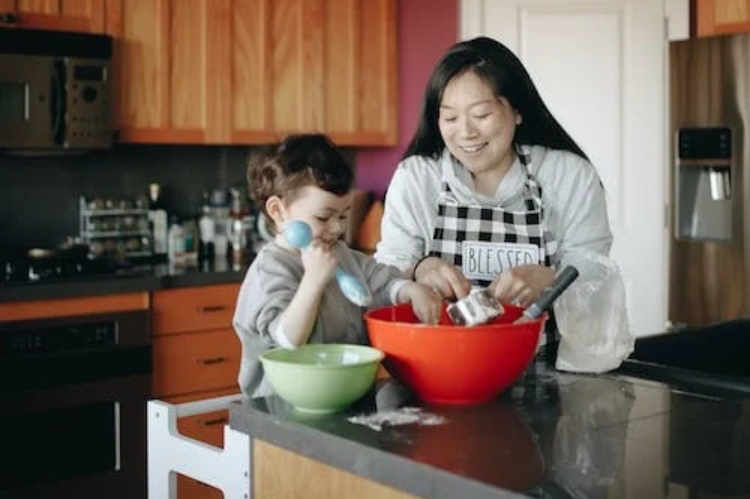
Together, you can bake a loaf of bread or some simple muffins to share at dinner. Let kids play quietly, and consider not using any form of electronics as entertainment from noon until 3 pm.
Explain to very young children that this part of your day is going to be given to Jesus instead of watching TV or playing on the phone or computer. Tell older children this is a special time of sacrifice offered to Jesus for the time He hung on the Cross before He rose again.
[[48430, 48675]]
On Good Friday, most parishes will have Stations of the Cross, Veneration of the Cross, and a Service of Communion. The Eucharist received on Good Friday is consecrated on Holy Thursday, since Friday is the one day of the year when there is no Catholic Mass.
These devotionals can be crowded and lengthy, but some young children can participate if you are willing and they are able. They can especially understand the simple and moving act during the Veneration of the Cross, when the faithful approach the Cross at the altar and kiss it, kneel before it or offer some gesture of love.
Eve of the Resurrection
On Holy Saturday, prepare to rejoice in the Risen Christ tomorrow. It's the perfect day to decorate Easter eggs and talk about the egg as a symbol of new life. The variety of decorating kits is amazing these days, and stickers featuring Christian symbols are easy to find. Have a selection of Christian stickers for use in decorating, and explain what they symbolize.
[[50961]]
Making Resurrection Rolls is another activity our kids enjoyed every year. Use canned crescent roll dough, cinnamon sugar, butter, and jumbo marshmallows for this treat. It's a tactile lesson and a snack in one.
Explain to your children that the rolls symbolize the tomb, the marshmallows are pure and white like Jesus. The cinnamon sugar represents the spices used to prepare Him for burial. Bake your rolls according to the recipe below.
When the rolls cool, everyone can break their roll open at once. Kids will discover that the marshmallow has melted into the dough, leaving the sweet treat with a completely hollow center.
Because He is not here; He is risen.
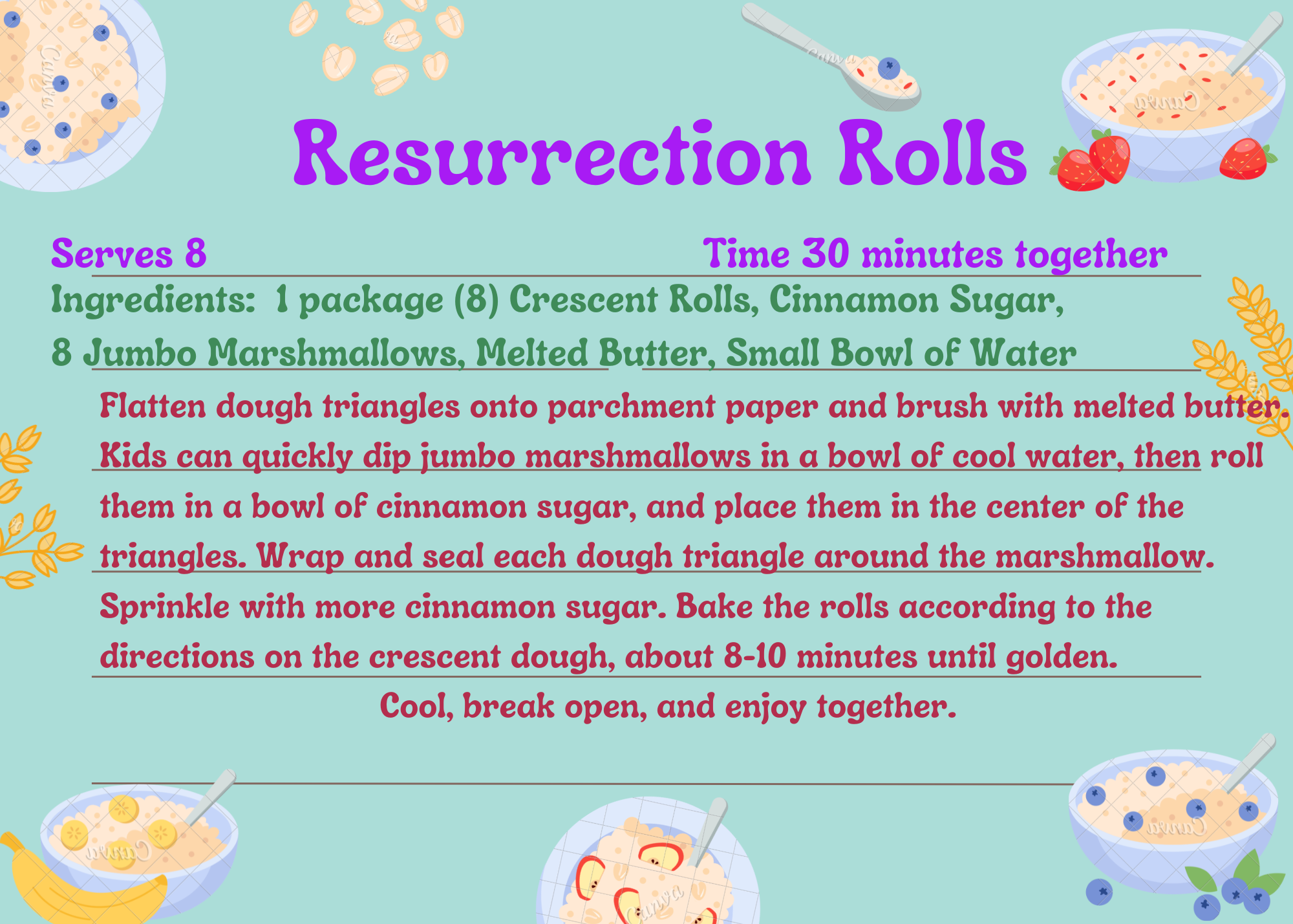
What's Most Important
The most important aspect of living the liturgical year with children is simply encouraging your children to believe in Christ's sacrificial love for them in the gift of their salvation.
It doesn't have to be perfect. You don't have to be perfect. Living liturgically should not feel like yet another exhausting project for mom and dad. It can be as little or as much as is manageable. On the best days, it should feel like a respite from the world, a respite that integrates your Catholic faith and actively incorporates it into the everyday moments of family life.
Your goal is to foster your children's natural inclination toward God. Over time, the Holy Spirit and your children will inspire you in the process. You don't have to be the best Catholic family in the neighborhood. Catholic life is real life. Sure, it has its Pintrest moments, but nothing is perfect this side of heaven.
God will always have new things to show and teach your family, individually and collectively. He will do that in astonishing ways as you bring His love, grace, hope, and light into your home for your children.
[[686, 868]]





